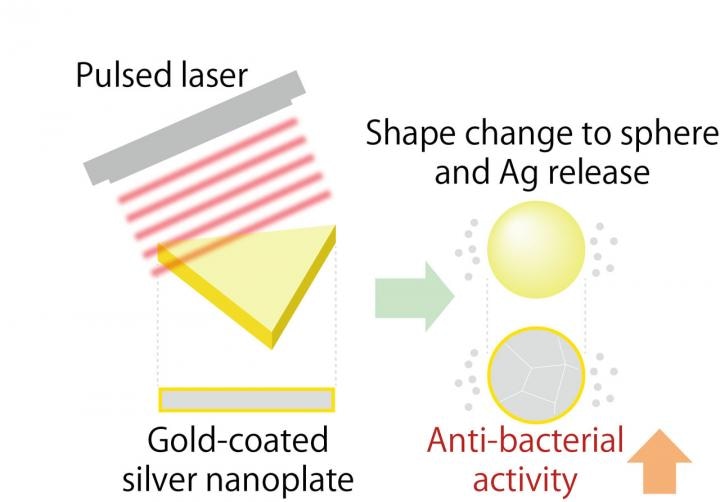Oct 27 2017
It is a known fact that silver nanoparticles, or AgNPs, have exceptional antibacterial characteristics and are believed to be a favored candidate in the crucial hunt for antibiotic-resistant bacteria. They have the potential to inhibit enzymes and can make bacteria to have irregularly shaped membranes, leading to outcomes such as restricted growth or even cell death.
By contrast, a collaborative team of scientists from Kumamoto University, Keio University, and Dai Nippon Toryo Co., Ltd., from Japan has discovered that AgNPs have a tendency to conglomerate, leading to decrease in their antibacterial properties. They overcame the conglomeration hurdle by using gold to coat the nanoparticles. Regrettably, even this led to a decrease in the antibacterial properties because the silver was no longer exposed. This persuaded the team to devise a technique to maintain not only the shape of the nanoparticles but also their antibacterial characteristics.
 When gold-coated silver nanoplates are irradiated with a pulsed laser, they change shape into a sphere and release silver ions which produces a strong antibacterial effect. CREDIT: Dr. Takuro Niidome.
When gold-coated silver nanoplates are irradiated with a pulsed laser, they change shape into a sphere and release silver ions which produces a strong antibacterial effect. CREDIT: Dr. Takuro Niidome.
Pulsed laser irradiation on the gold-coated silver nanoparticles, or Ag@Au NPs, proved to be the answer to the challenge. Upon using a laser pulse to irradiate Ag@Au NPs, their morphology gets modified from being a triangular plate to being a spherical shape. This is because of the melting of metals due to the heat of the laser pulse. The team demonstrated that Ag@Au NPs were nearly 50% triangular and 50% spherical before being irradiated; however, they transformed to being 94% spherical upon irradiation. In addition, the silver-to-gold ratio of the Ag@Au NPs before irradiation was nearly 22:1. In contrast, after irradiation the ratio was almost 4.5:1. The team credited this to the formation of flaws in the gold-coating which enabled some of the silver to escape in the form of ions. This is a significant feature of the pulsed laser irradiation method because the liberation of silver results in the bactericidal effect.
We have developed a method to activate the antibacterial properties of silver nanoparticles at will. Our experiments have shown that, while non-irradiated gold-coated silver nanoparticles have only minor antibacterial properties, the effects are significantly increased after pulsed laser irradiation. We hope to develop this technology further as a method of managing bacteria that have developed antibacterial resistance.
stated Professor Takuro Niidome, who led the research team.
The irradiated Ag@Au NPs were found to be powerfully effective in destroying Escherichia coli, culminating in a colony survival rate of 0%. Although silver NPs were found to be similarly efficacious, the Ag@Au NPs had the benefits of being triggered as per the requirements and did not have the propensity to get clustered together similar to the silver NPs.
The study was reported online on October 11, 2017 in the Nanoscale journal published by the Royal Society of Chemistry.